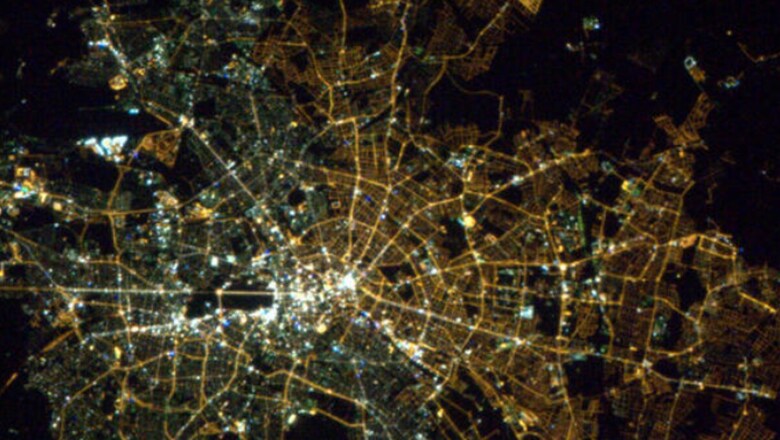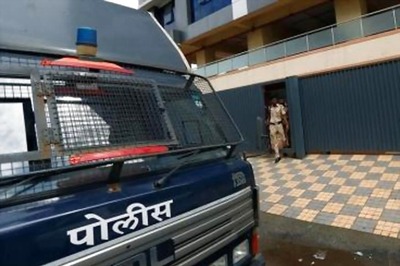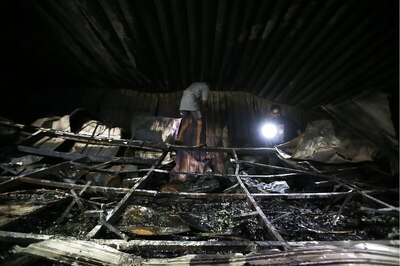
views
Berlin stands united today, yet has visible traces of its 40 year division. A photograph shared by DW Euromaxx clearly shows this divide, depicting East Berlin in a yellow/orange shade while West Berlin appears to have white/green tinted shade. Former East Berlin’s side maintains approximately 40,000 sodium-vapour lamps, radiating a unique yellow glow, while the Western sector has transitioned to mercury vapour, fluorescent or LED lighting, emitting a greenish tone. Surprisingly, this glowing separation is even visible from space. The reel shared by DW explores an intriguing electric mystery, uncovering why Berlin’s streets still have remnants of its 40 year division. For those not aware, Berlin was divided by a brick and wire wall for more than 28 years. As a historic milestone, the fall of the Berlin wall marked the end of the Cold War.
The reporter explains, “You can still see the difference between east and West Berlin from space. Even though the Berlin wall fell in 1989 and the reason is the colour of the streetlights. In the former communist East Berlin, they give off a harsher yellow light. In the west, there’s more of a green tint. Apparently, it’s due to different fitting on the lamps. Now, in case you don’t know, the Berlin Wall divided the city for almost 30 years. The communist East German regime put it up to keep East Germans from escaping to the west. Today, satellite images show the colours slowly changing as the city updates its streetlights. But there’s still a noticeable difference. So more than three decades after this divided city was reunified.”
A post shared by Euromaxx (@dw_euromaxx)
Reacting to the post, a user wrote, “The yellow lights aren’t harsher, they are softer and nicer to the eyes and more romantic and especially when I was kid during the winter nights did give off a lovely shine. I hate the krass light of today’s LEDs.”
Another asserted, “As a onetime tourist I can say that the east is nicer, cleaner and more German.”
“Those lights are lasting a lifetime,” a comment read.
An individual mentioned, “And you can also feel the difference.”
A user quipped, “Well it’s getting almost completely unnoticeable as lots of streets in Lichtenberg and Pberg are already LED.”
The original space image, shared by Canadian astronaut Chris Hadfield in 2013, shows a stark contrast between bright white light coming from the government quarter and shopping districts in West Berlin, compared to the relatively darker East. As reported by The Telegraph, the West experienced a commercial and shopping boom in contrast to the East. The image featuring a dark patch is the Tiergarten, the centrally located park in the capital. Meanwhile, West Berlin’s Kurfuerstendamm remains a hotspot as the city’s largest cluster of luxury shops.
Berlin at night. Amazingly, I think the light bulbs still show the East/West division from orbit. pic.twitter.com/JiawRa3JJv— Chris Hadfield (@Cmdr_Hadfield) April 17, 2013
Meanwhile, Berlin has since replaced its gas powered lights with electrical ones, a move aimed at restricting energy consumption.
What's your reaction?




















Comments
0 comment